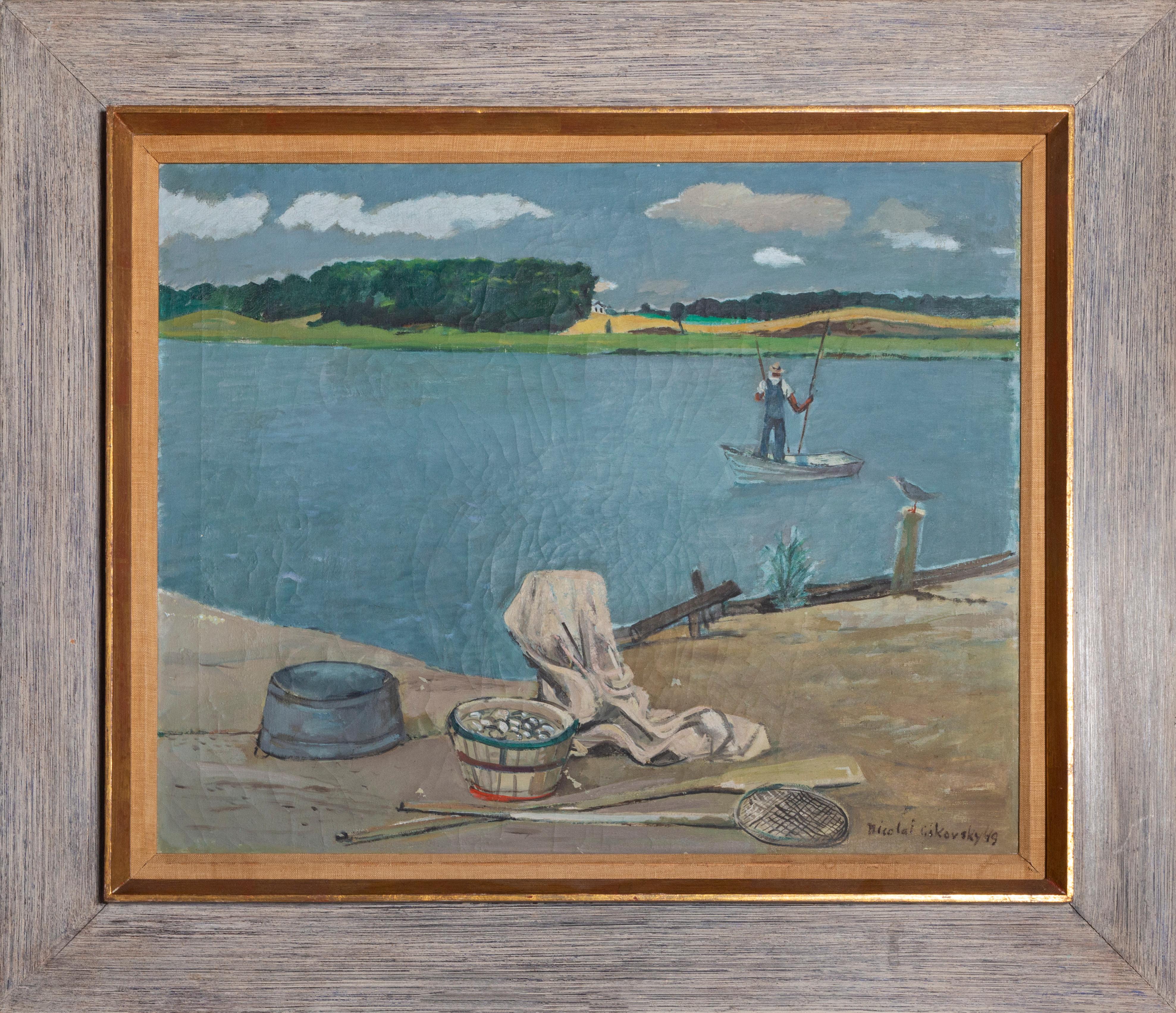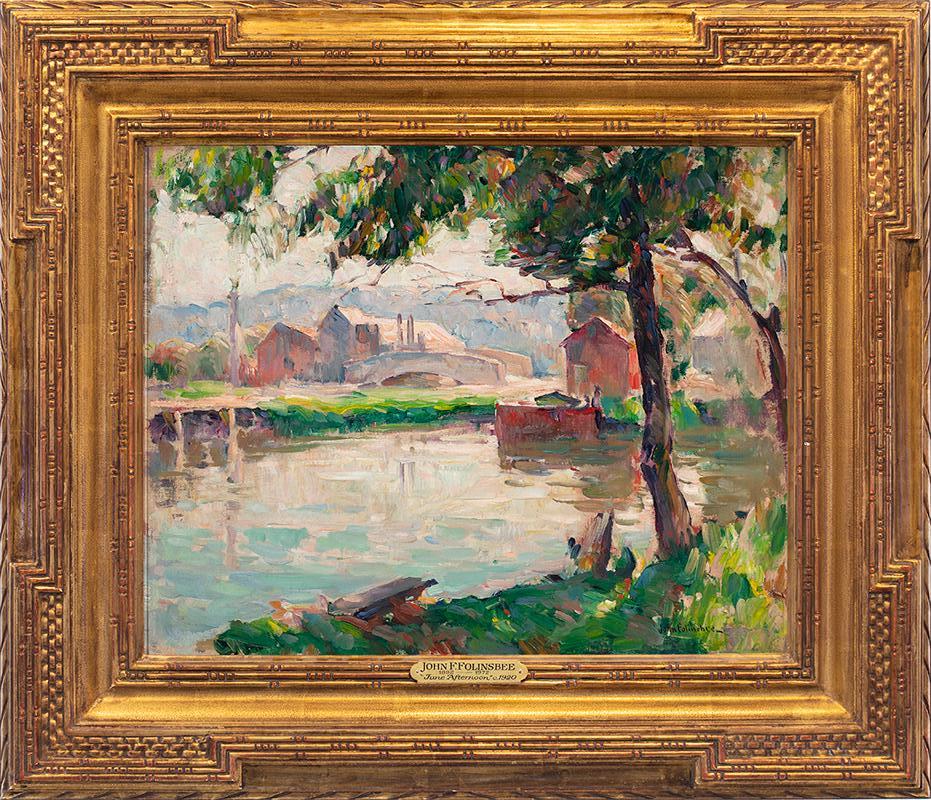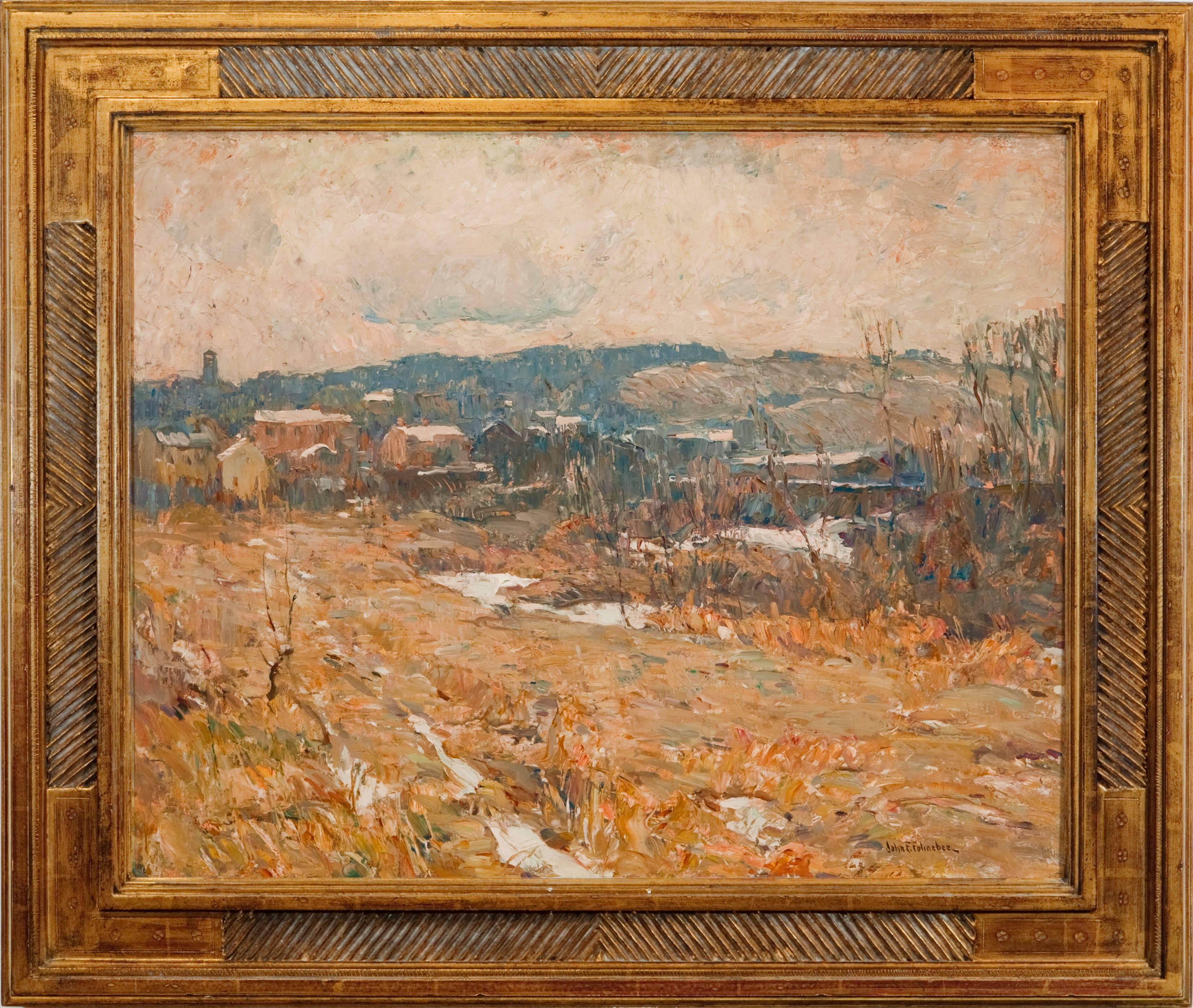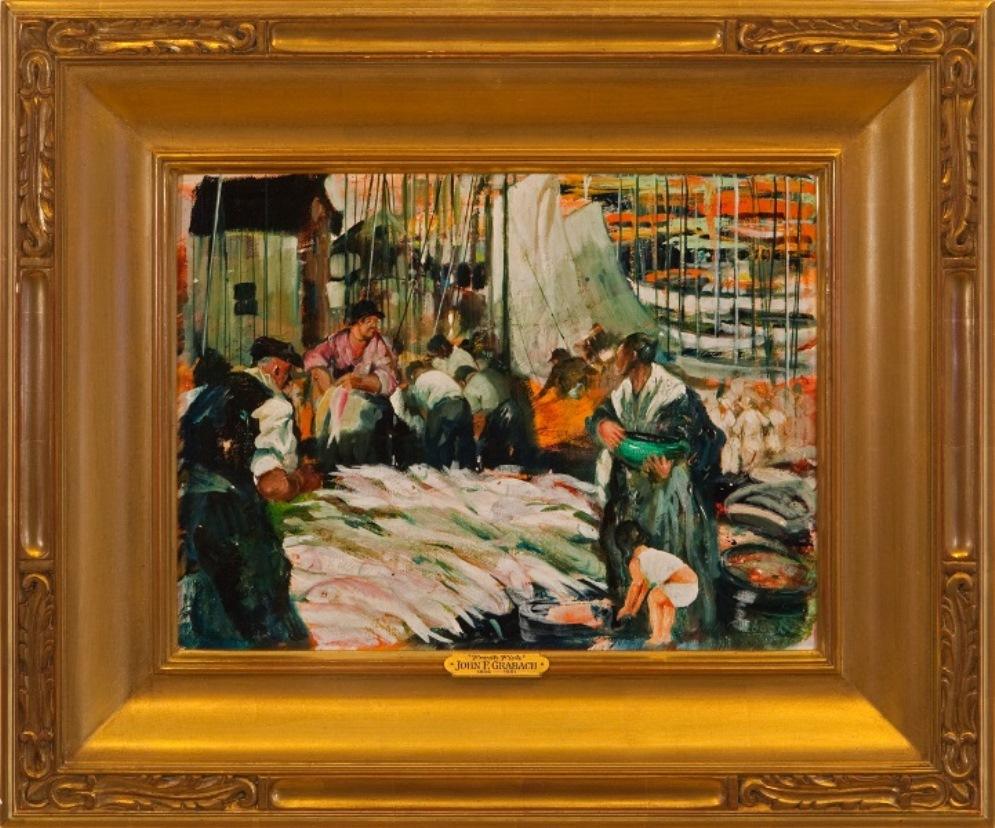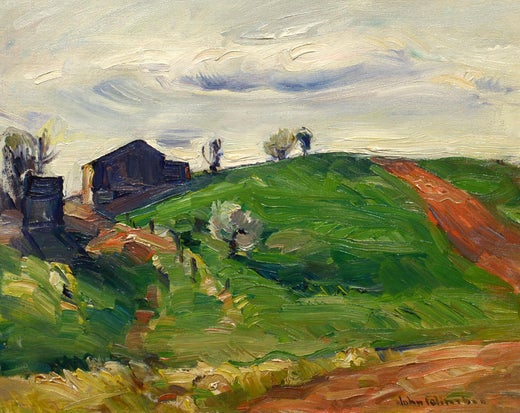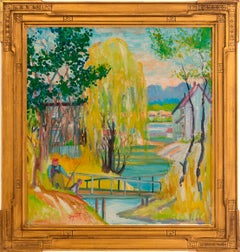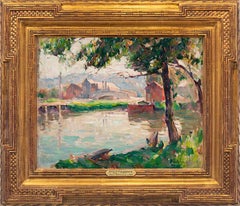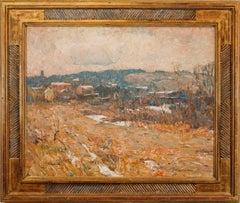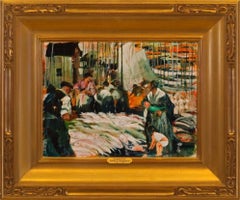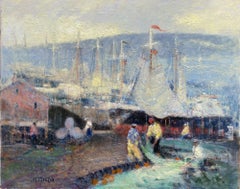John Fulton Folinsbee"Shad Fisherman"c. 1924
c. 1924
About the Item
- Creator:John Fulton Folinsbee (1892-1972, American)
- Creation Year:c. 1924
- Dimensions:Height: 16 in (40.64 cm)Width: 20 in (50.8 cm)
- More Editions & Sizes:Frame Size 24.5" x 28.5" x 2.5"Price: $74,375
- Medium:
- Movement & Style:
- Period:
- Condition:
- Gallery Location:Lambertville, NJ
- Reference Number:Seller: JOL111116081stDibs: LU3741458163
John Fulton Folinsbee
One of the finest painters to embark upon the New Hope Art Colony, John Fulton Folinsbee, did so in 1916. Born in Buffalo, New York, he was an active young man who enjoyed playing sports and swimming like most. In the summer of 1906, while on a family vacation in Sea Cliff, Long Island, Folinsbee (nicknamed Jack) felt extremely tired while swimming in the bay. Barely making it back to shore, he collapsed stricken with polio. Almost taking his life, the attack left his legs paralyzed and his right arm badly weakened. Polio would confine him to a wheelchair for the rest of his life. Making bad times even worse, one-week later Folinsbee’s older brother was killed in a diving accident. Faced with these adversities, he made the best of his situation. Determined not to let this handicap keep him down, he enrolled at the Art Students League in Woodstock, New York, under the tutelage of Birge Harrison and John F. Carlson in 1912. These two men would prove to be powerful influences in the development of his career. It was there that Folinsbee met his lifelong friend and the best man at his wedding, fellow artist, Harry Leith-Ross. Folinsbee married Ruth Baldwin in 1914, and two years later, upon the suggestion of Birge Harrison, the couple moved permanently to New Hope. Folinsbee and Ruth had two daughters together named Elizabeth and Joan. Folinsbee said of Harrison, “I perhaps owe more to Mr. Harrison in the development of my work and the influence of his friendship on my character than to any other man," and of John F. Carlson, “I am very grateful of the instruction given to me by John Carlson. I needed it.” In 1924, Folinsbee bought a piece of property along the Delaware River on Main Street in New Hope, where he had a home designed and built by artist and architect, Morgan Colt. This remained Folinsbee’s home and studio for the rest of his life. Folinsbee, early in his career (1912–24) painted in a heavy impressionist style with tightly applied broken brushstrokes similar in technique to the works of Childe Hassam. In the mid and later 1920s and into the 1930s, his brushstrokes broadened. His figurative works from this period have a strong Ashcan feeling. In the late 1930s and into the 1940s, his strokes became even broader and eventually, he employed the use of a palette knife for the application of paint. In the summer, Folinsbee often traveled to Maine with his family, where he would load the equipment into a small boat and head out to paint. He learned to adapt to almost any situation, not allowing his disability to hold him back. There are few in the field of 20th century American painting that rivals the ability of Folinsbee. He was truly one of New Hope’s finest artists. Folinsbee’s work has been represented in numerous important national exhibitions from 1913–70 and was the recipient of many medals, prizes and awards. His work is in the permanent collections of the Pennsylvania Academy of the Fine Arts, the Rhode Island School of Design, the National Academy of Design, the Phillips Collection in Washington, the Corcoran Gallery of Art, the Museum of Fine Arts in Houston, the New Jersey State Museum, Princeton University Art Museum, the Philadelphia Art Club, the Reading Public Museum, the National Art Club and the James A. Michener Art Museum, among others.
- ShippingRetrieving quote...Shipping from: Lambertville, NJ
- Return Policy
More From This Seller
View AllLate 20th Century American Impressionist Landscape Paintings
Canvas, Oil
1920s American Impressionist Landscape Paintings
Oil, Canvas
1920s American Impressionist Landscape Paintings
Canvas, Oil
1930s American Impressionist Landscape Paintings
Canvas, Oil
Late 20th Century American Impressionist Landscape Paintings
Canvas, Oil
1910s American Impressionist Landscape Paintings
Canvas, Oil
You May Also Like
1940s American Impressionist Landscape Paintings
Canvas, Oil
Mid-20th Century American Impressionist Figurative Paintings
Oil
2010s American Impressionist Figurative Paintings
Canvas, Oil
Mid-20th Century American Impressionist Landscape Paintings
Canvas, Oil
1910s Impressionist Landscape Paintings
Oil
Mid-20th Century American Impressionist Landscape Paintings
Oil, Board

